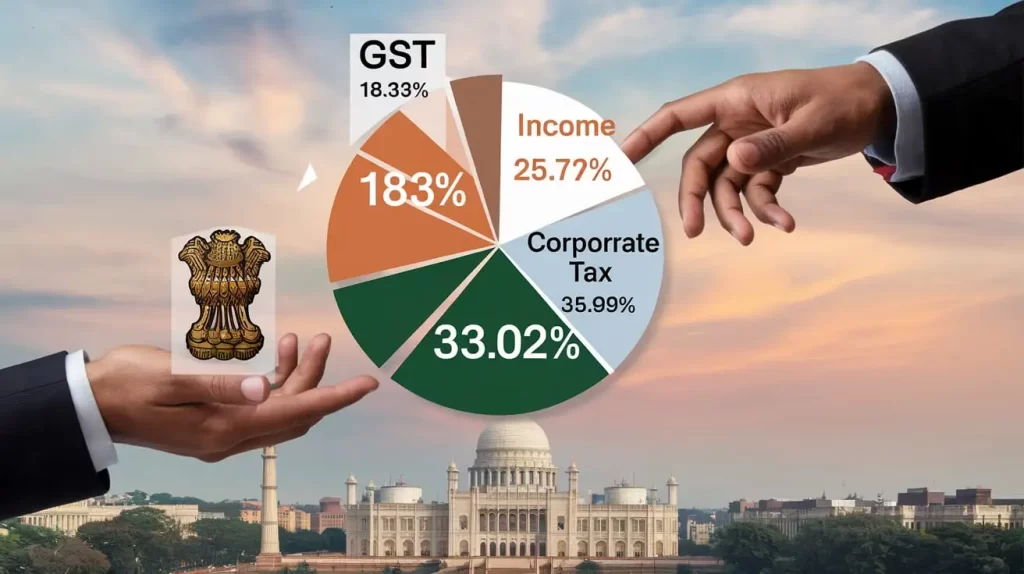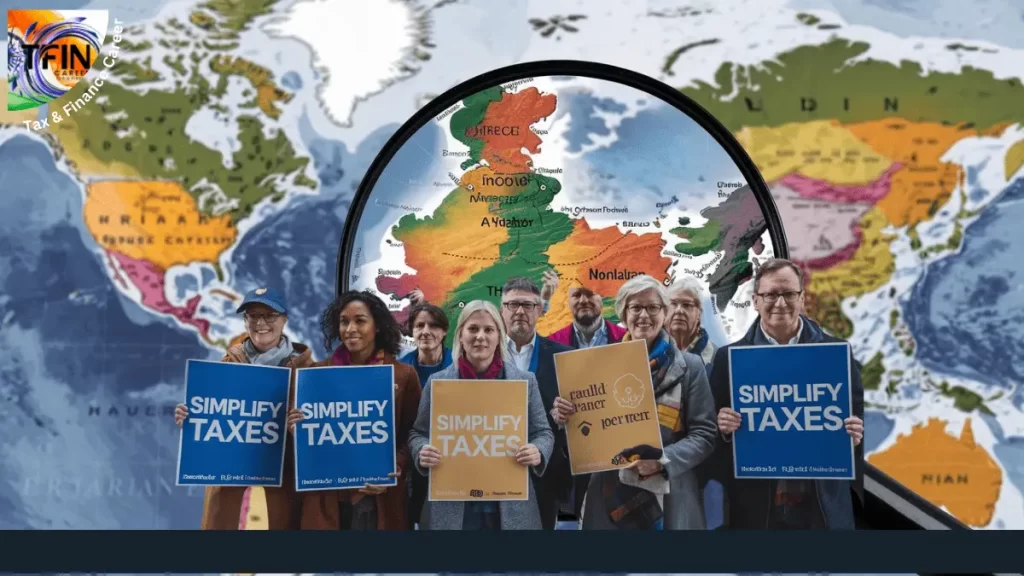Dark Secrets of Indian Taxation 2024: Why Simplification Not Just Desirable, but Essential!
I. Introduction Indian Taxation
A. Context of Taxation in India
Also Read: Why Are Taxes So Complicated in India? Ultimate Positive One
Taxation in India has a rich history, transforming significantly since independence in 1947. It’s like that old family heirloom passed down, modified, and sometimes even misinterpreted through generations.
- Evolution of tax laws since independence: Initially, tax laws were pretty straightforward, but as the nation grew, so did its needs. New legislation cropped up, addressing everything from income tax to excise duties.
- Key amendments and reforms over the decades: We’ve seen major reforms like introducing the Goods and Services Tax (GST) in 2017, aimed at unifying a chaotic mix of indirect taxes.
- Impact of globalization on Indian taxation: With globalization, our tax system had to adapt to meet international standards. It’s like trying to keep up with trends on social media – always changing and challenging to stay relevant!
B. Current Tax Structure Overview (Click to know more)

Today’s Indian tax system can feel overwhelming, like a giant tangle of cables behind your TV.
- Classification of taxes: direct vs. indirect: Direct taxes are those you pay based on your income, while indirect taxes are included in the prices of goods and services – sneaky, right?
- Major taxes levied in India: GST, income tax, etc.: We have the GST, income tax, corporate tax, and others—each adding its layer of complexity to our wallets.
- Role of state and central governments in tax collection: The state and central governments have their hands in the tax pie. They work in tandem, but sometimes it feels like they’re not on the same page!
C. Objectives of Taxation
So, why do we even have taxes?
- Revenue generation for public welfare: Taxes help fund public services like roads, schools, and hospitals. Think of it as paying for your ticket to a concert—everyone benefits from the show!
- Redistribution of wealth and economic equity: Taxes aim to narrow the gap between the haves and have-nots. It’s about giving everyone a fair shot.
- Influence on fiscal policy and economic stability: Taxes also play a big part in stabilizing our economy, like the stabilizers on a bicycle.
II. Common Challenges in the Indian Tax System

A. Complexity of Tax Regulations
Let’s face it: the tax laws can seem intimidating, often leaving you scratching your head.
- Overlapping laws and regulations complicating compliance: Different rules for states, central regulations—it’s like trying to solve a jigsaw puzzle where half the pieces are missing!
- Frequent amendments leading to confusion: Just when you think you’ve got it figured out, the government decides to mix it all up.
- Examples of high-profile tax disputes: Keep an eye on news headlines! High-profile cases often reveal the tangled mess many find themselves in over-taxation.
B. Bureaucratic Hurdles of Taxation
Dealing with tax issues often feels like wading through molasses.
- Lengthy processes for tax returns and refunds: Want your money back? Good luck—sometimes it can take ages!
- Corruption and inefficiencies in tax administration: Sadly, corruption can muddy the waters, making even the simplest tasks complex.
- Impact on small businesses and individual taxpayers: Smaller taxpayers often bear the brunt of this inefficient system, leading to a fear of audits and penalties.
C. Public Awareness and Participation
Most folks are too busy with their lives to dive deeply into tax nuances.
- Lack of understanding of tax obligations among citizens: Many people just don’t know what they’re supposed to do or where to start.
- Low engagement in the tax legislative process: Few engage in tax-related discussions, leaving the decisions to a small group.
- The role of education in fostering informed taxpayers: Teaching people about taxes could empower them to navigate the system better.
III. The Dark Side of Taxation Practices
Know More about – Tax Evasion Laws: How to Avoid Jail by Mastering Evasion Laws in India Now!
A. Tax Evasion and Fraud
Here’s where it gets a bit dark—tax evasion is a big issue in India.
- Statistics on tax evasion in India: Studies show that a significant percentage of taxpayers don’t fully declare their income. Oops!
- Methods employed by taxpayers to evade taxes: From inflating expenses to underreporting income, people can get pretty creative.
- Government measures to combat tax fraud: Authorities are cracking down on these practices, but it’s a constant game of cat and mouse.
B. Discriminatory Tax Practices
Not everyone is treated equally under the tax umbrella.
- Inequities in tax burdens across different demographics: Some pay an unfair amount, while others slip through the cracks.
- Examining the impact of progressive vs. regressive taxation: Progressive taxes hit the wealthy harder, while regressive taxes can be tough on the less fortunate.
- Case studies on marginalized communities: These communities often find themselves at a greater disadvantage, struggling to meet their tax obligations.
C. Taxation Impact on Economic Growth
Complicated tax structures can stifle broader economic progress.
- How complex tax structures hinder economic development: When businesses fear audits over every little detail, growth stalls.
- Correlation between taxation and foreign investment: Investors often prefer simple tax regimes, viewing complexity as a red flag.
- Long-term consequences of poor tax policy on growth: A troubled tax system can lead to sluggish growth—not a good look for the economy!
IV. The Case for Tax Simplification

A. Benefits of a Simplified Tax System
Imagine a world where taxes are straightforward.
- Enhancing compliance and reducing evasion: If taxes were easier to comprehend, more people would pay what they owe.
- Improving the ease of doing business in India: Less red tape means entrepreneurs can focus on what matters—growing their businesses.
- Potential for boosting revenue through transparency: Clear guidelines can enhance trust in the system, meaning more folks will step up.
B. Global Comparisons
Learning from others is key.
- Analysis of tax systems in other countries: Countries like New Zealand and Canada have streamlined approaches, showing us that simplicity pays off.
- Lessons learned from successful tax reforms worldwide: These nations offer solid frameworks we can adapt to our context.
- Key takeaways for implementing changes in India: It’s all about finding what works best for us.
C. Proposed Taxation Reforms for Simplification
Reforms are essential if we want to see change.
- Streamlining tax laws and reducing redundancy: Fewer laws could lead to fewer headaches for taxpayers.
- Introducing unified tax platforms and technology: Digital platforms could make filing taxes as easy as clicking “send” on an email.
- Ensuring better taxpayer services and education: Providing resources to help taxpayers understand their obligations can make a huge difference.
V. Path Forward: Realizing Tax Simplification
Also Read: Tax Truth: Why Only 3% Pay Income Tax in 2024
A. Engaging Stakeholders in Tax Reform
Collaboration is key.
- Role of government, businesses, and civil society: Everyone has a stake in making taxes better, and that means working together.
- Importance of public consultations and feedback: Letting taxpayers voice their concerns can lead to practical solutions.
- Strategies for Collaborative Policymaking: A united front between all parties can push for reforms that matter.
B. Legislative Initiatives for Change
Legislation must adapt to the changing needs.
- Overview of potential bills and amendments: Keep an eye on proposals aimed at simplifying tax systems.
- Tracking progress on tax reform initiatives: Accountability can help ensure that changes happen!
- Encouraging proactive legislation for simplification: We need lawmakers to prioritize tax simplification actively.
C. Monitoring and Evaluation Mechanisms
We need to know what’s working and what’s not.
- Establishing benchmarks for tax system efficiency: Setting standards can help measure how efficient our tax processes are.
- Ongoing analysis of tax policies and their impact: Regular reviews can help fine-tune our approach to taxation.
- Ensuring accountability within the tax administration: Tax authorities must be held accountable to the public they serve.
VI. Conclusion and Future Outlook
It’s clear that simplifying the Indian tax system isn’t just nice to have; it’s essential for economic growth and stability. A streamlined approach could lead to benefits for everyone—taxpayers, businesses, and the government alike.
The time for change is now! We must rally together—citizens, businesses, and the government—to push for a simpler, more effective tax system. Your voice matters!
VII. FAQs
Q1. What are the main reasons for tax complexity in India?
A1. Many overlapping laws, constant changes, and a lack of public awareness make it pretty complicated.
Q2. How does tax evasion affect the Indian economy?
A.2. It reduces government revenue, leading to less money for public services and infrastructure.
Q3. What steps can an average taxpayer take to stay compliant?
A3. Stay informed, keep organized records, and consider consulting a tax professional when in doubt.
Q4. How does simplification benefit small businesses specifically?
A4. t reduces the burden of compliance, helps them save time and money, and encourages growth without fear of audits.
Q5. Are there successful examples of tax simplification from other countries?
A5. Yes! Countries like Sweden and Canada have adopted systems that are easy to understand and navigate, serving as great examples for India.
Thank you for reading this post, don't forget to subscribe!






